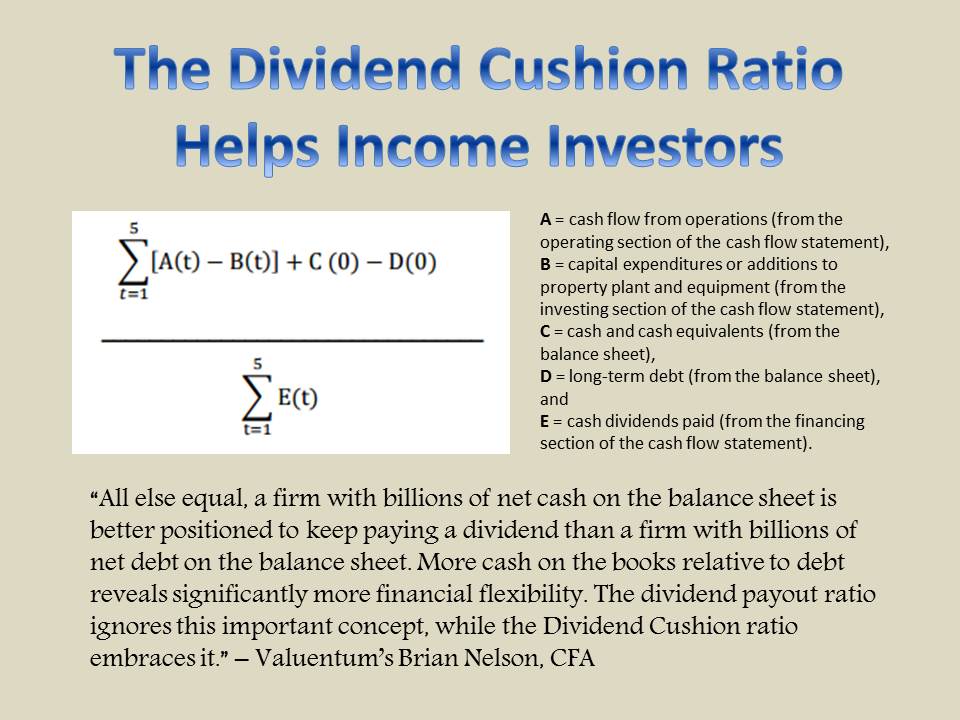Member LoginDividend CushionValue Trap |
Fundamental data is updated weekly, as of the prior weekend. Please download the Full Report and Dividend Report for
any changes.
Jan 7, 2021
Chicken Sandwich Wars Heating Up In the US
Image Shown: Rivals in the quick-service restaurant space are aggressively competing for share in the fast-growing premium chicken sandwich category following Popeyes' considerable success. Source: Images/logos property of the respective companies. Nothing has been the same in the fast-food industry since Popeyes launched its first nationwide chicken sandwich August 12, 2019. The release of the delicious chicken sandwich from the company named after Gene Hackman's character Popeye Doyle in the 1971 film The French Connection may even have changed the fast-food industry as we know it. Popeyes' "tender all-white meat chicken breast fillet, marinated in (its) authentic blend of Louisiana seasonings, then hand battered and breaded in (its) all new buttermilk coating...served with crisp barrel cured pickles and Classic or Spicy Mayonnaise, served on a warm and toasted buttery brioche bun" has been driving the taste buds of customers wild. Just writing this has made us hungry for one, and rivals haven't been sitting quietly in light of the success of Popeyes' new creation. Who can forget the infamous Popeyes and Chick-fil-A feud on Twitter that caught customers' attention, and even Wendy's couldn't resist jumping into the ring. There's clearly a lot at stake. Jan 5, 2021
The Electric Vehicle (EV) Market Is Hot and Getting Hotter
Image Shown: A look at Tesla Inc’s new Gigafactory factory (Model Y body shop) in Shanghai, China. Image Source: Tesla Inc – Third Quarter of 2020 IR Earnings Presentation. The electric vehicle (‘EV’) market is hot and getting hotter. Aided by a combination of supportive government policies such as subsides for EVs (purchase tax credits, manufacturing tax credits), plans to ban the sale of automobiles powered by internal combustion engines (‘ICE’) in the coming years, and shifting consumer preferences (households preferring to appear “green”), the long-term outlook for EV sales is quite bright. Tesla is the posterchild of the EV boom given its first-mover advantage, though competitive headwinds are rising. Legacy auto manufacturers are looking to bulk up their EV offerings while new market entrants such as Lordstown Motors and privately-held Rivian, are set to further disrupt the industry. Ford Motor invested in Rivian back in 2019 to bulk up its presence in the EV market. By the middle of 2021, Rivian aims to begin deliveries of its EV pickup truck in the US, the R1T. Lordstown Motors also aims to bring an EV pickup truck to market, named the Endurance, with deliveries set to begin in early-2021. However, as global EV sales appear set to grow immensely, there is room for a number of winners in this space. Back in July 2020, privately-held Deloitte estimated that global EV sales will grow from an estimated 2.5 million in 2020 to 11.2 million in 2025 and then to 31.1 million by 2030, good for annual compound growth of about 29% in the coming decade, according to the research firm. EV sales in China are expected to represent about half of global EV sales in 2030, according to Deloitte, followed by the European market representing just over one quarter of global EV sales in 2030. Dec 30, 2020
Recent Data Indicates US Consumer Spending Holding Up Well, Online Sales Surging
Image Shown: As of this writing, the S&P 500 (SPY) appears ready to end 2020 on a high note, supported by the resilience of the US consumer. The ongoing coronavirus (‘COVID-19’) pandemic accelerated the shift towards e-commerce, and that change has long legs. Retailers that previously invested in their digital operations and omni-channel sales capabilities were able to capitalize on this shift while those that relied heavily on foot traffic were hurt badly. Numerous retailers went under in 2020 including J.C. Penney and Neiman Marcus. Holiday season shopping data indicates that US consumer spending was frontloaded and grew modestly in 2020, aided by surging e-commerce sales, which advanced nearly 50% on a year-over-year basis. The recent passage of additional fiscal stimulus measures in the US supports the outlook for the domestic economy going forward. Our fair value estimate range for the S&P 500 of 3,530-3,920 based on normalized economic conditions and dovish Fed/Treasury actions, released June 12 when the S&P 500 was trading ~3,000, remains unchanged. We remain bullish on stocks for the long run. Dec 29, 2020
GoodRx Has Potential Capital Appreciation Upside But Long-Term Threats Loom
Image Source: GoodRx Holdings Inc – December 2020 IR Presentation. GoodRx Holdings Inc is a disrupter in the US pharmacy space, and the company went public in September 2020. The firm’s digitally-oriented prescription drug pricing platform generates strong normalized operating income and allows for an impressive cash flow profile. Supported by its pristine balance sheet, GoodRx has the financial firepower to expand into adjacent businesses to further extend its growth runway. While meaningful competitive threats are a concern, such as those posed by Amazon Inc entering the online pharmacy space, GoodRx has significant competitive advantages over its peers and benefits from the network effect. The company’s active monthly user base has grown at an impressive clip during the past several years, and the firm has a number of avenues to generate meaningful upside. The company’s total addressable market is enormous. Dec 28, 2020
Qualcomm’s Growth Trajectory Is Impressive and Supported by Numerous Secular Trends
Image Source: Qualcomm Inc – 2019 Analyst Day Presentation. Qualcomm offers dividend growth investors a way to play the rollout of 5G technologies and other nascent technologies worldwide, along with technologies that do not exist yet but could be made viable by the ongoing rollout of 5G wireless networks. We like Qualcomm’s business model, and we view the company as well-positioned to capitalize on numerous secular growth tailwinds. Beyond the recent launch of several 5G-capable smartphones by various companies, its automotive business offers Qualcomm ample upside potential. Additionally, we are intrigued by the opportunities created by the IoT trend and the firm’s AI-related investments. Concerns over competitive threats to Qualcomm’s modem business are not to be viewed lightly, though the company has many technical competitive advantages (know-how) derived from years of development and remains a leader in its field. As long as Qualcomm continues to innovate, made possible through its meaningful R&D investments, its product offerings and expansive IP portfolio should continue to remain in high demand. The company’s dividend growth trajectory is supported by its stellar cash flow profile and relatively strong balance sheet. Shares of QCOM yield ~1.8% as of this writing. Dec 23, 2020
Korn Ferry Is Ridiculously Underpriced, A Huge Market Inefficiency Exposed
Image Shown: Korn Ferry has meaningful global reach and caters to a wide variety of end industries. Image Source: Korn Ferry – Second Quarter of Fiscal 2021 IR Earnings Presentation. Korn Ferry is a global organizational consulting firm that provides recruiting solutions, research offerings, various consulting services and other solutions to a wide array of industries. The firm has meaningful global reach. By investing in its digital capabilities and talent acquisition (growing its highly-skilled workforce) while expanding its worldwide footprint, Korn Ferry aims to differentiate itself from its peers including Ernst & Young, McKinsey, Willis Towers Watson PLC and Deloitte. We see Korn Ferry as having substantial capital appreciation upside as our fair value estimate of $66 per share of KFY is well above where shares are trading as of this writing (currently KFY is trading in the mid-$40s). Additionally, shares of KFY yield ~0.9%, and the firm offers incremental dividend growth upside as well. The company is highly-rated on the Valuentum Buying Index, with a rating of 9 (as of December 23, 2020). Dec 22, 2020
Lockheed Makes an Intriguing Acquisition
Image Source: Lockheed Martin Corporation – December 2020 IR Presentation covering Lockheed Martin Corporation’s pending acquisition of Aerojet Rocketdyne Holdings Inc. On December 20, Lockheed Martin Corp announced it was acquiring Aerojet Rocketdyne for $56.00 per share in cash, or $51.00 per share after taking into account a special $5.00 per share pre-closing cash dividend payment that Aerojet Rocketdyne plans to pay out. The deal has a total equity value of ~$5 billion when including the special dividend component and is expected to close in the second half of 2021. In our view, this deal is highly complementary to Lockheed Martin’s existing operations. Combining Aerojet Rocketdyne’s propulsion and power systems business segments with Lockheed Martin’s expansive aircraft, helicopter, missile, space, maritime, and weapon systems business segments should lead to sizable operational and developmental synergies. Dec 18, 2020
Omni-Channel Strategy at Dick’s Sporting Goods Makes It a Long-Term Dividend Growth Idea
Image Source: Dick’s Sporting Goods Inc – Third Quarter of 2020 Earnings Infographic. The ongoing coronavirus (‘COVID-19’) pandemic, due to the desire of households to socially distance, has seen a meaningful amount of consumer spending shift to e-commerce platforms. Retailers that invested heavily in their online operations, while also bulking up their omni-channel sales capabilities, were in a much better position when the pandemic hit than those that had to rely largely on their physical footprint. Over the past year, “contactless” delivery options have become much more popular. That includes fulfillment options such as curbside pickup and in-store pickup (usually in specially designated areas), where consumers purchase goods online and then travel to the relevant physical store location to acquire those products. Demand for home delivery services has surged as well. On November 27, we added Dick’s Sporting Goods to the Dividend Growth Newsletter portfolio to gain exposure to a high-quality retailer with strong omni-channel sales operations, and the rise of e-commerce more broadly. In this note, let's focus on Dick’s Sporting Goods’ operational improvements and e-commerce strategy. Dec 18, 2020
Dividend Increases/Decreases for the Week December 18
Let's take a look at companies that raised/lowered their dividend this week.
prev12345678910111213141516171819202122232425
26272829303132333435363738394041424344454647484950 51525354555657585960616263646566676869707172737475 767778798081828384858687888990919293949596979899100 101102103104105106107108109110111112113114115116117118119120 121122123124125126127128129130131132133134135136137138139140 141142143144145146147148149150151152153154155156157158159160 161162163164165166167168169170171172173174175176177178179180 181182183184185186187188189190191192193194195196197198199200 201202next The High Yield Dividend Newsletter, Best Ideas
Newsletter, Dividend Growth Newsletter, Nelson Exclusive publication, and any reports, articles and content found on
this website are for information purposes only and should not be considered a solicitation to buy or sell any
security. The sources of the data used on this website are believed by Valuentum to be reliable, but the data’s
accuracy, completeness or interpretation cannot be guaranteed. Valuentum is not responsible for any errors or
omissions or for results obtained from the use of its newsletters, reports, commentary, or publications and accepts
no liability for how readers may choose to utilize the content. Valuentum is not a money manager, is not a
registered investment advisor and does not offer brokerage or investment banking services. Valuentum, its employees,
and affiliates may have long, short or derivative positions in the stock or stocks mentioned on this site.
|


Image Source: L Brands Inc – Third Quarter of Fiscal 2020 IR Earnings Presentation. L Brands is home to the Victoria’s Secret, PINK and Bath & Body Works retail brands (PINK is included within its Victoria’s Secret umbrella). The firm has ~2,700 company-operated stores in Canada, the Greater China region, and the US along with more than 700 franchised locations worldwide. Sometime in 2021, L Brands intends to separate Bath & Body Works from its other operations, a plan management reiterated during a virtual December 2020 investor presentation. Bath & Body Works has been growing at a brisk pace of late while Victoria’s Secret has been a drag on company-wide performance at L Brands. The company has a lot on its plate, as navigating the ongoing COVID-19 pandemic while pursuing a major corporate overhaul is no easy task, though the distribution of COVID-19 vaccines should help improve its outlook as the global economy slowly begins to recover from the public health crisis. Recent fiscal stimulus measures in the US and elsewhere further supports L Brands’ outlook, as well as that of other retailers. Dick's Sporting Goods and Home Depot remain our two favorite omni-channel retail ideas for dividend-growth oriented investors.